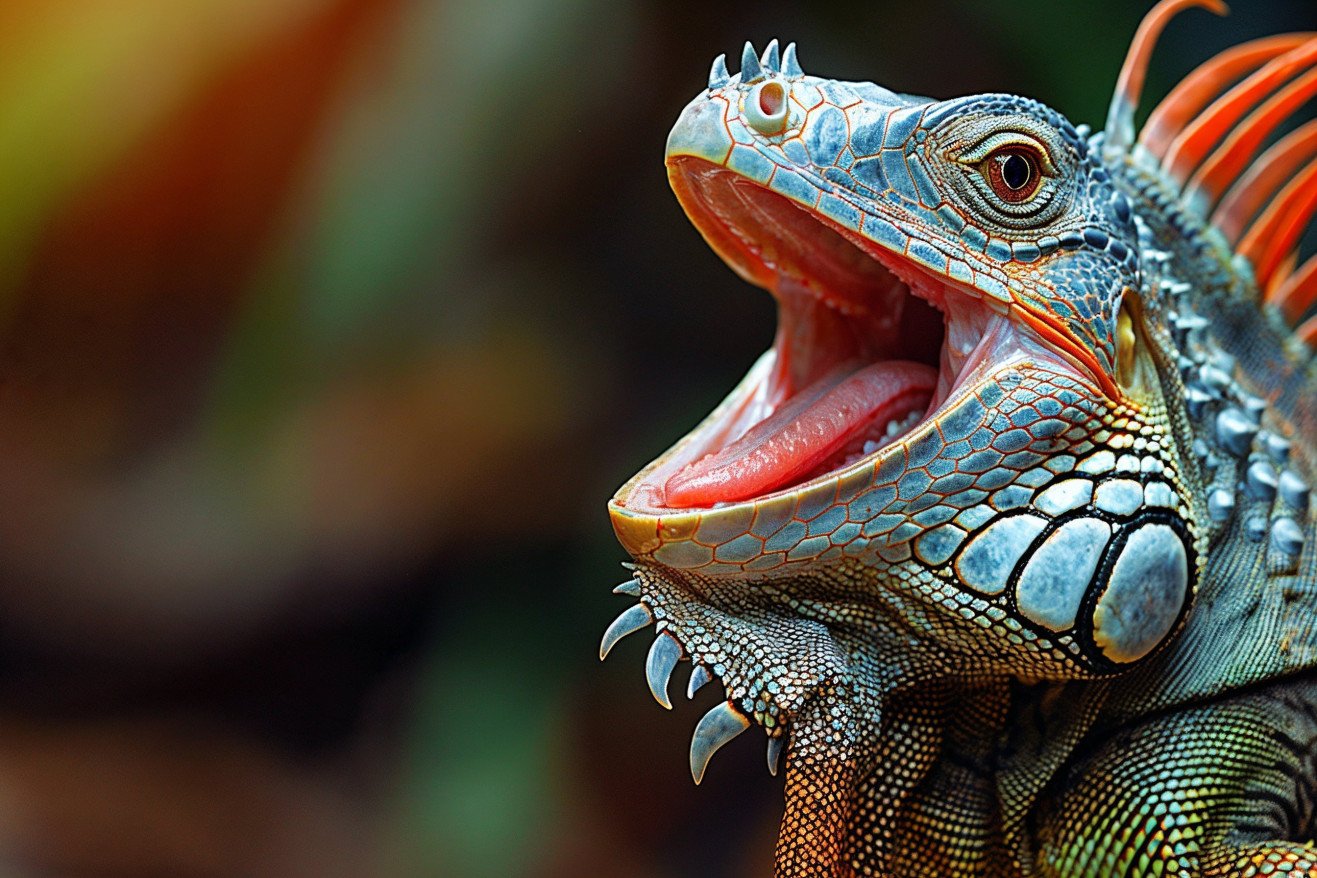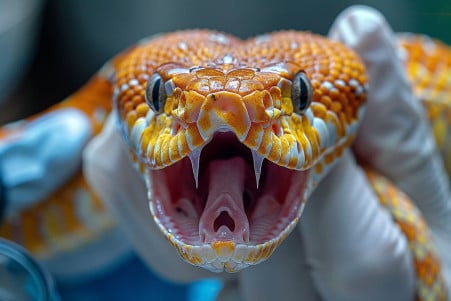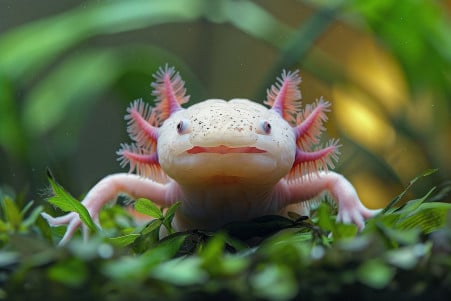Lizard Teeth: A Look at Their Dental Anatomy and Functions
10 April 2024 • Updated 9 April 2024

Lizards are one of the most interesting reptiles due to their unique looks and behaviors, but one question remains – do lizards have teeth, and if so, what do they use them for? Lizards do have teeth, but the number, shape, and arrangement of these teeth can vary greatly between species. The teeth are used primarily for catching prey and self-defense, but some lizards have even evolved to use their teeth to help them climb by giving them a better grip on surfaces.
In this article, we will take a deep dive into a multidisciplinary investigation that includes herpetology, evolutionary biology, and comparative anatomy to explore the different dental adaptations in lizards. We will uncover the fascinating adaptations that have allowed these incredible reptiles to succeed in their environments and learn more about the important functions of teeth in lizards, which will give us a greater understanding of the natural world.
Do lizards have teeth?
Tooth Attachment: Thecodont vs. Acrodont and Pleurodont
While human teeth are thecodont, or anchored in the jawbone by a socket, lizard teeth are only superficially attached to the jawbone in one of two ways - acrodont or pleurodont. According to LafeberVet, acrodont teeth are fused to the biting edges of the jaw, while pleurodont teeth have a more secure attachment within the jawbone. Acrodont teeth, which are found in chameleons and some agamids like bearded dragons, are more prone to damage and are not replaceable. On the other hand, many species of lizards with pleurodont dentition can replace lost teeth throughout their lives.
In addition to these differences, human teeth are highly specialized, with incisors for cutting, canines for tearing, and molars for grinding. Lizard teeth, as noted by Britannica, are more homogenous in shape - primarily simple cones or blades. While some species have different tooth shapes in different parts of the jaw, these differences are not as functionally distinct as the differences between human teeth.
Finally, while humans only go through two sets of teeth in their lifetime - the primary "baby" teeth and the permanent adult set - lizards continuously replace their teeth through a process of tooth regeneration that's driven by stem cells, as explained in this research. This polyphyodont dentition enables lizards to replace damaged or worn teeth as needed throughout their lives.
Working Teeth: What Lizard Teeth Do
The primary function of lizard teeth is to help the reptiles catch and eat their food. Per Britannica, the teeth of larger carnivorous lizards are used to bite off pieces of their prey, which they then swallow whole, while insectivorous lizards use their teeth to crack the exoskeletons of insects before swallowing them whole. In addition, some lizards use their teeth to help them climb by biting into surfaces.
Meanwhile, venomous lizards like the Gila monster have specialized grooved teeth that are used to deliver venom to their prey, as outlined by Britannica. This venom delivery system, combined with the biting and tearing action of their teeth, helps these lizards catch and eat their prey. The many ways that lizards use their teeth show how well they have evolved to meet their needs in a variety of habitats.
Regenerative Dentition: Lizard Tooth Replacement Mechanisms
Lizards are notable for their ability to regenerate teeth throughout their lives, a phenomenon called polyphodontia. As the eLife paper on bearded dragons explains, the dental lamina is the primary structure that makes this regenerative ability possible in most lizards. In some lizards, including bearded dragons, there is a permanent dental lamina that gradually activates the development of replacement teeth.
A study in PubMed has found putative dental stem cells on the lingual side of the dental lamina in leopard geckos. These label-retaining cells express Lgr5 and other stem cell markers and are activated by Wnt signaling, indicating that they are critical to the ongoing process of tooth replacement.
The details of lizard tooth replacement, including the mechanisms that make it possible, vary between different lizard families, as outlined in the Zoomorphology paper. For example, while varanids like the Komodo dragon have a "one-for-one" replacement system, others have more complex systems that involve alternating tooth generations. The review in PMC explains that these differences are due to the ways that the regenerative systems are influenced by the signaling pathways and patterning signals of the surrounding tissues. Lizard dentition's incredible flexibility is one of the things that makes it so interesting to researchers who study the evolution of vertebrate tooth replacement.
Evolutionary Perspectives on Lizard Dental Diversity
The evolution of complex, multicusped teeth in certain lizard lineages appears to have facilitated the shift towards plant-based diets, ultimately contributing to increased species diversity. In a paper published in Nature Communications, the researchers note that while the origin of multicuspid teeth dates back to the Late Jurassic and Early Cretaceous, they were initially rare for millions of years. It wasn’t until the Cretaceous Terrestrial Revolution that the abundance and diversity of multiple-cusped teeth and herbivory began to increase.
Of note, lizard tooth complexity has demonstrated a bidirectional evolutionary trajectory, with some lineages evolving simpler, unicuspid tooth morphologies. As the Earth.com article explains, squamates, the common ancestors of all snakes and lizards, originally had simple peg-like teeth that were well-suited for eating insects. However, more complex, multicusped dentitions evolved in certain lineages, often in association with the adoption of herbivorous diets.
Meanwhile, dental innovations like mammal-like prismatic enamel have also evolved in some ancient reptile lineages, including the extinct species Priosphenodon, as outlined by ScienceDaily. This suggests that reptiles can develop highly specialized tooth morphologies in response to intense evolutionary pressures, a phenomenon that’s similar to the adaptations observed in the earliest mammalian ancestors.
In addition, differences in tooth implantation and regenerative capabilities have been observed across various lizard and reptile lineages, as noted in the PMC paper on Paroedura picta. These variations in dental mechanisms likely played a role in the radiation and evolutionary success of squamates and other reptiles over long periods of time.
Conclusion: Understanding the Diversity of Lizard Teeth
Lizards have an incredible diversity of dental structures and regenerative abilities. Their teeth are used for important purposes such as capturing prey, defense, and in some cases, venom delivery. According to Britannica, larger carnivorous lizards use their teeth to tear off chunks of prey they can swallow whole, while insectivorous lizards crack the exoskeletons of insects using their teeth before swallowing them whole. Some lizards also use their teeth for climbing by gripping surfaces securely.
Venomous lizards like the Gila monster have grooved teeth that allow them to deliver venom to their prey, as described by Britannica. This venom delivery system, combined with the ability to grip and tear prey, enables these lizards to effectively capture and eat their prey.
Lizard dentition has undergone many evolutionary changes that have enabled dietary shifts and increased speciation. According to the Nature Communications study, the evolution of complex, multicusped teeth in certain lizard lineages has enabled a shift to herbivory, which has led to increased species diversity. Notably, lizard tooth complexity has undergone a bidirectional evolutionary trajectory, with some lineages evolving simpler, unicuspid tooth shapes after a period of time.
The ability to continuously replace teeth through stem cells and the dental lamina is a lizard-specific trait that is not present in mammals. As noted in the eLife study, the dental lamina is a critical structure that enables this regenerative ability in most lizards. In some lizards, such as the bearded dragon, the dental lamina is present as a permanent structure that slowly begins to form replacement teeth over time.
By learning about the incredible diversity and adaptations of lizard teeth, we can gain a better understanding of the amazing ways that evolution has shaped the natural world. These reptiles have evolved a unique ability to regenerate their teeth and specialized teeth that have helped them survive in a variety of habitats.


